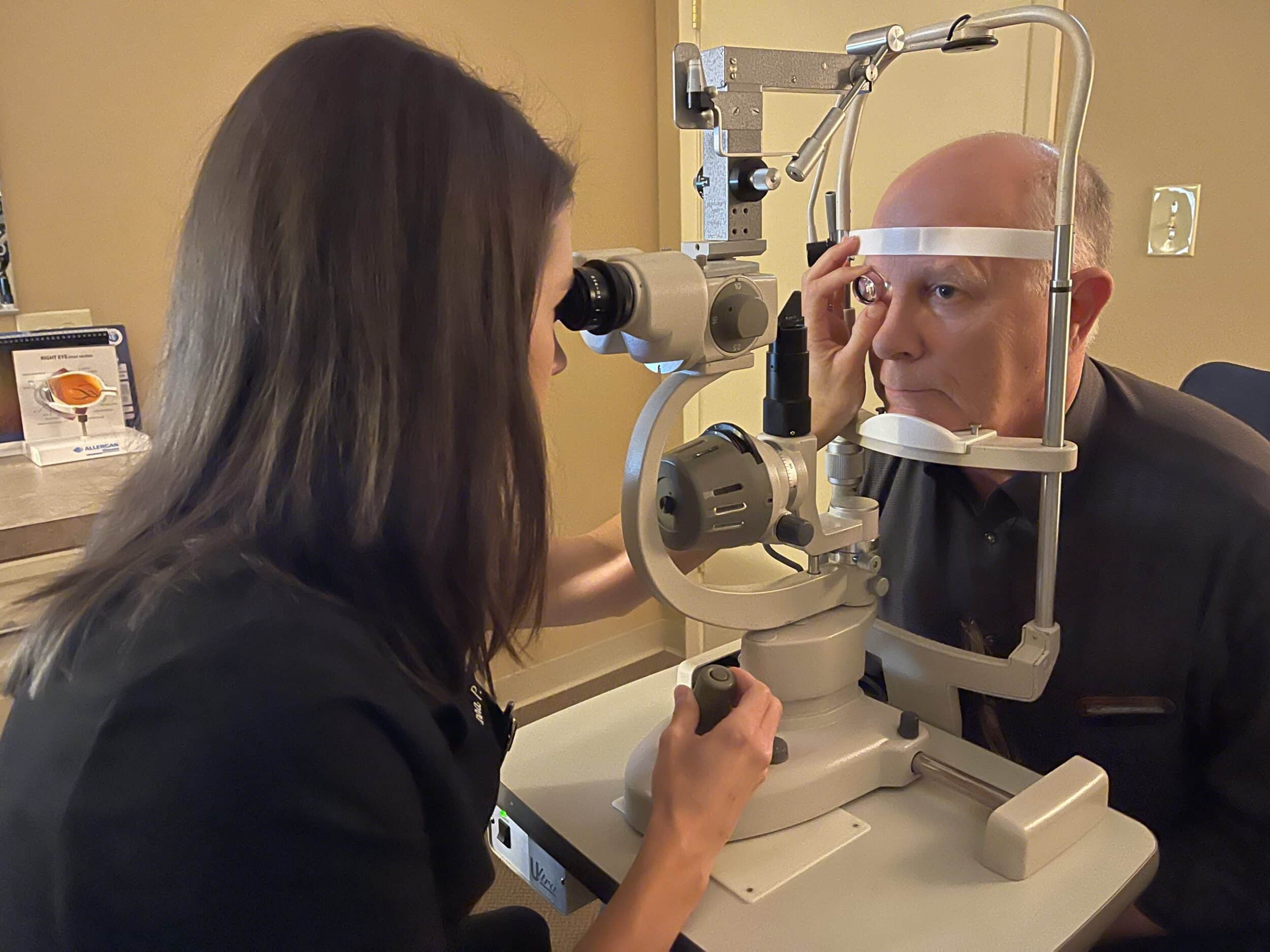
Are You at Risk for Age-related Macular Degeneration?
Imagine looking into the face of someone you love, but not really seeing them: Instead of those familiar features, you only see a blank or dark spot. That’s what it can be like for someone with advanced Age-related Macular Degeneration (ARMD), one of the top causes for irreversible vision loss in people over fifty.
During Age-Related Macular Degeneration and Low Vision Awareness Month in February, the eye doctors of Hattiesburg Eye Clinic want you to know more about ARMD-as well as what you can do to better protect your eyesight from the effects of this serious disease.
Types of ARMD
ARMD primarily affects the macula, a part of the retina responsible for fine detail sight, particularly in the central portion of the visual field. It’s a progressive eye disease that can begin subtly and remain unnoticeable to the patient for some time.
“In the early stages of ARMD a person may not experience any noticeable symptoms,” says Dr. Anna Armstrong, OD, a Therapeutic Certified Optometrist with Hattiesburg Eye Clinic specializing in diseases of the eye. “With progressed ARMD a person may notice blurry vision or distorted vision, and have difficulty with facial recognition.”
There are at least two types of macular degeneration. Wet macular degeneration occurs when blood vessels around the macula begin to leak. This can result in distorted or blurred vision, and it may lead to a sudden and rapid loss of central vision.
Most people, though, experience the second type known as dry macular degeneration. The macular tissues start to thin and deteriorate, and yellowy deposits made up of lipids and proteins (known as drusen) accumulate around the remaining macula. Unlike wet ARMD, dry ARMD usually happens more slowly. It can also progress to wet in advanced stages.
Be Alert to ARMD Risk Factors
Researchers can’t pinpoint the exact causes for ARMD, but there do seem to be identifiable risk factors making some people more susceptible than others. Some factors are beyond a person’s control, such as a family history of the disease or being of European descent. And getting older increases everyone’s risk of ARMD.
Even so, Dr. Armstrong says there are other factors like obesity, smoking or high blood pressure that individuals can do something about to lower their risk for ARMD.
“Taking steps to improve your general health can also improve your eye health, particularly in regard to diseases like ARMD. Regular exercise and a well-balanced diet are also very important factors.”
And although ARMD is incurable, there are treatments available that can limit its damage.
“We recommend patients with intermediate stage ARMD take AREDS2 vitamin supplements to help reduce the risk of further progression,” says Dr. Armstrong. “There are also injections available for those whose ‘dry’ disease has advanced to the ‘wet’ stage that can help better manage it. And, for those with significant vision impairment from ARMD, low vision therapy can help improve their daily functions.”
Get Ahead of ARMD Early
As with other eye diseases, an early diagnosis of ARMD can significantly improve a patient’s long-term prognosis. Doctors can detect signs of the disease during routine eye exams, and further tests verify the diagnosis and the extent of disease progression. Dr. Armstrong and her colleagues thus recommend yearly eye exams beginning by age 40, or earlier if you have a family history of eye disease.
ARMD could significantly affect your daily routine and overall quality of life. But early diagnosis and ongoing management of the condition could help you preserve more of your vision.
For information and treatment options about age-related macular degeneration or other low vision conditions visit us at our website. To learn more about how Hattiesburg Eye Clinic can improve your vision health, call 601-268-5910 (or toll-free 800-624-8254) or schedule a consultation with us at www.hattiesburgeyeclinic.com/contact-us/
